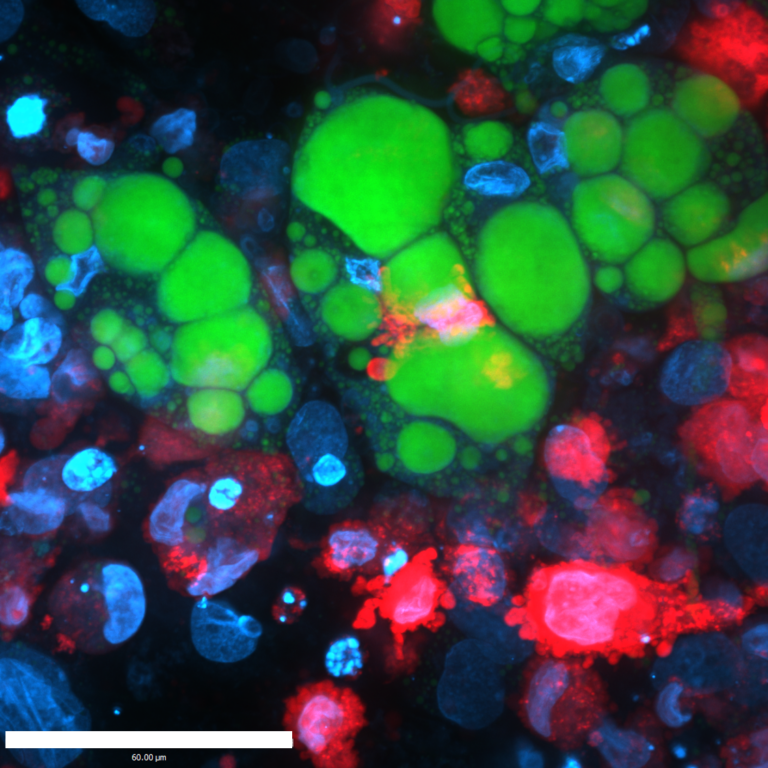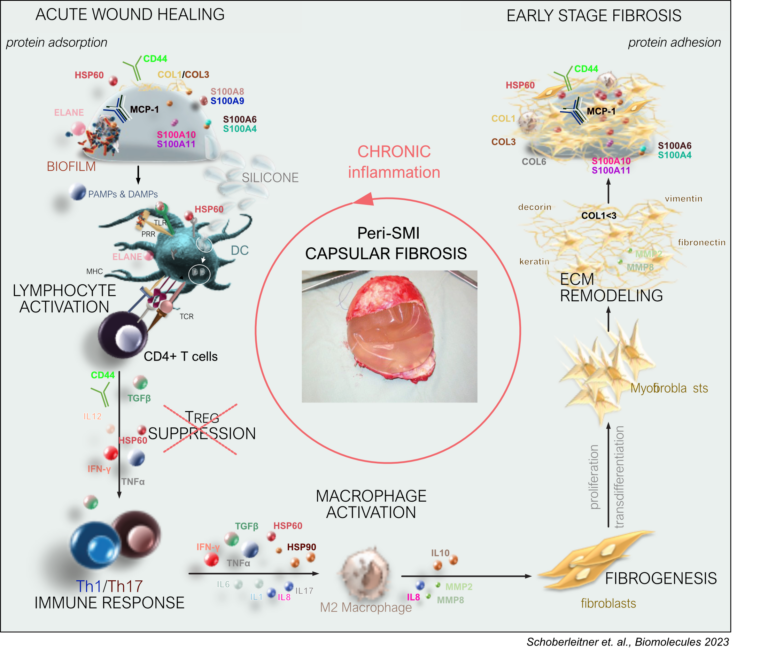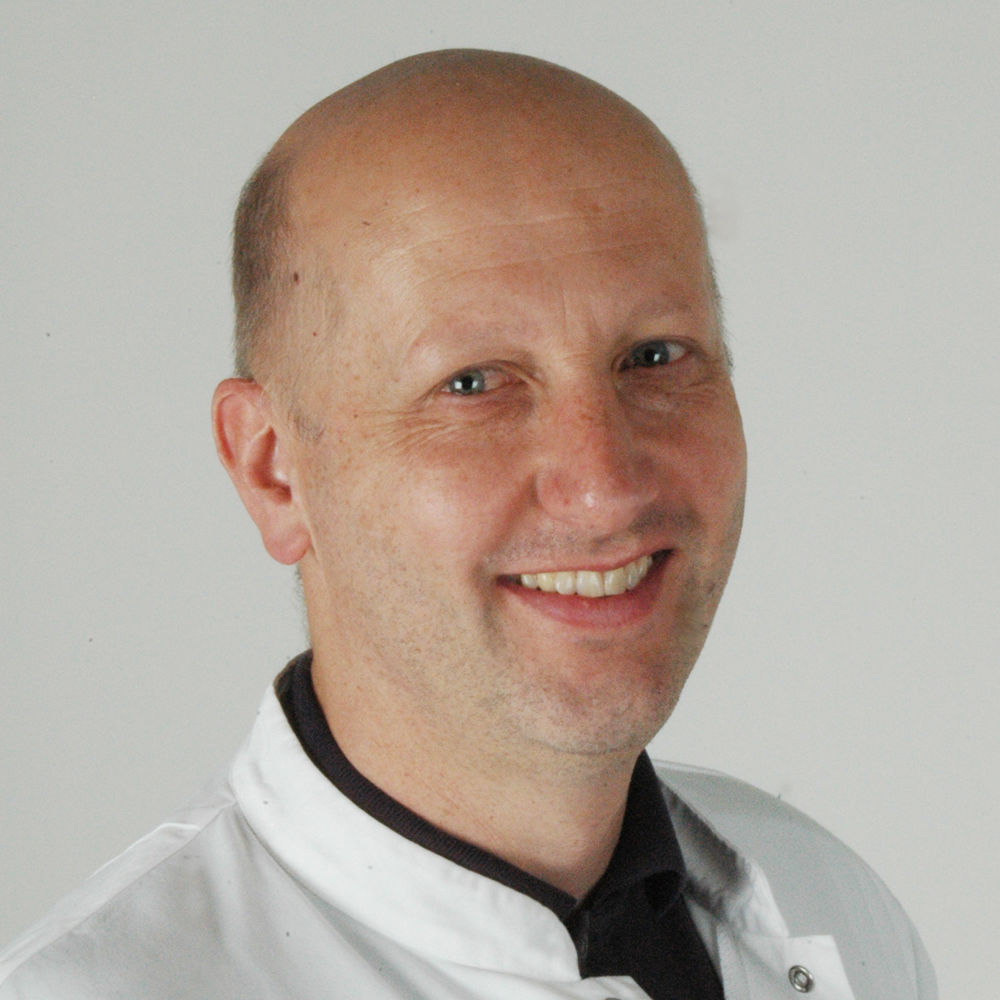
Anichstrasse 35
6020 Innsbruck
Fax: +43 512-504-22735
Email: gerhard.pierer@i-med.ac.at
Website: https://pci.tirol-kliniken.at/
Research year
Research Branch (ÖSTAT Classification)
302037, 302081, 302048, 106018, 106039, 302062
Keywords
adipose derived stem cells, congenital deformities, cytokines, fat tissue, fibrosis, immune cells, implants, thoracic wall deformities, and wound healing
Research Focus
Repair of congenital thoracic wall deformities and consequence on cardiopulmonary function and quality of life
In-vivo immuno-biocompatibility of implant surfaces
Subcutaneous human adipose tissue and its role in impaired wound healing
General Facts
Research in the Department of Plastic, Reconstructive and Aesthetic Surgery is focused on translational research addressing immunological and physiological clinical challenges with state of the art basic molecular techniques. The on-site laboratory headed by C. Ploner continuously supports research projects of our clinical Department units, i.e. the units for Breast/Limb/Nerve-Surgery, Congenital Deformities – Reconstructive Surgery and Wound management/healing and mentors Masters as well as PhD student projects in the course of clinical PhD-program “Applied Morphology and Regeneration”.
More than 20,000 patient contacts and 4000 surgical interventions per year are managed by our Department, wherein impaired healing of complex, chronic wounds is one of the most frequent diagnoses. Therefore one of our major aims is to molecularly understand the healing process of chronic wounds and develop new therapies to improve healing and to improve healing and patient quality of life. Tissue reconstruction techniques following tumour resection or traumatic insults and plastic surgery of congenital disorders are the other research area of our Department. Herein, surgical techniques and determination of immuno-biocompatibility of implants are in a focus of the clinical research groups.
Research
Three research groups are currently active at the Univ. Hospital for Plastic, Reconstructive and Aesthetic surgery:
Research group 1 – Tumour, Reconstruction and Malformations
Research group 2 – Breast, Hand and Nerve Surgery
Research group 3 – Adipose Tissue and Wound Healing
Research Group 1: Cardiopulmonary function after chest wall deformity surgery (Del-Frari, Schwabegger)
Pectus excavatum (PE) and carinatum (PC) present not only as an aesthetic disturbance but also with obstructive pulmonary mechanics. Cardiopulmonary function following PE/ PC surgery was investigated with conflicting results. Our studies on cardiorespiratory function, anatomic effectiveness, patients QoL and body-image showed that cardiopulmonary function is not impaired after surgery. This FWF supported study is finalised, two manuscripts are published and preparation of a further manuscript concerning the psychological effects is in progress.
Semi-endoscopic approach to craniosynostosis repair in babies (Schwabegger, Moser-Rumer, Huber)
The reduction from open surgical repair of premature synostosis to a minimally invasive semi-endoscopic approach in 4 to 6 months young babies is reported to be very beneficial concerning blood loss and postoperative recovery. Two years ago, this new approach was also implemented in our clinic and is under clinical observation with patients and data collection. A thesis is completed and a clinical study is in progress for publication
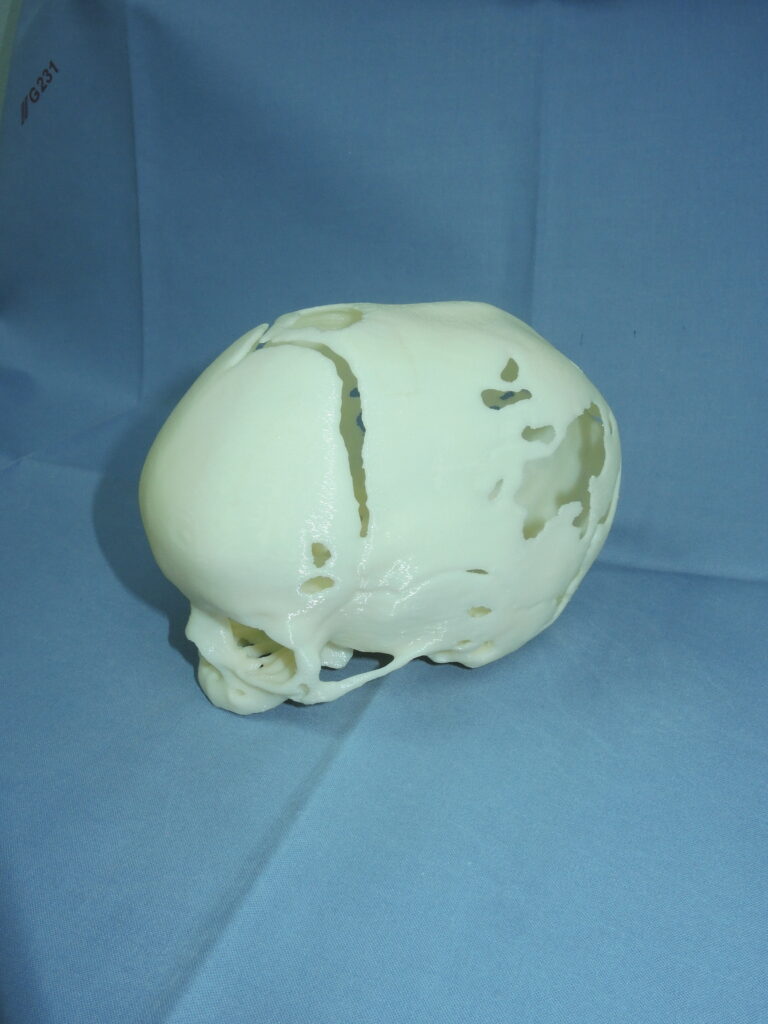
Research Group 2: Aesthetic and reconstructive breast surgery (Wolfram D.)
Our group has been investigating various immunological side effects of silicone breast implants for now more than 20 years. During the past 5 years, we focused our research interest on the immuno-biocompatibility of different expander surfaces. We examine immune mechanisms in women undergoing prophylactic mastectomy and consecutive expander-based breast reconstruction due to a well-known high risk of breast cancer. Following implantation of these surfaces, we (1) analyse the immediate immune response in the wound bed fluid and (2) we determine the immunological mechanisms in the fibrotic capsular tissue 6-8 months after expander implantation. At the same time, we are interested in clinical outcome studies in the reconstructive and aesthetic setting. We have investigated the aesthetic outcome and patient satisfaction after autologous breast reconstruction with the PAP (profunda artery perforator flap) and compared these data with our results after DIEP breast reconstruction. Long-term outcome analyses are important for quality control and the development of new surgical techniques.
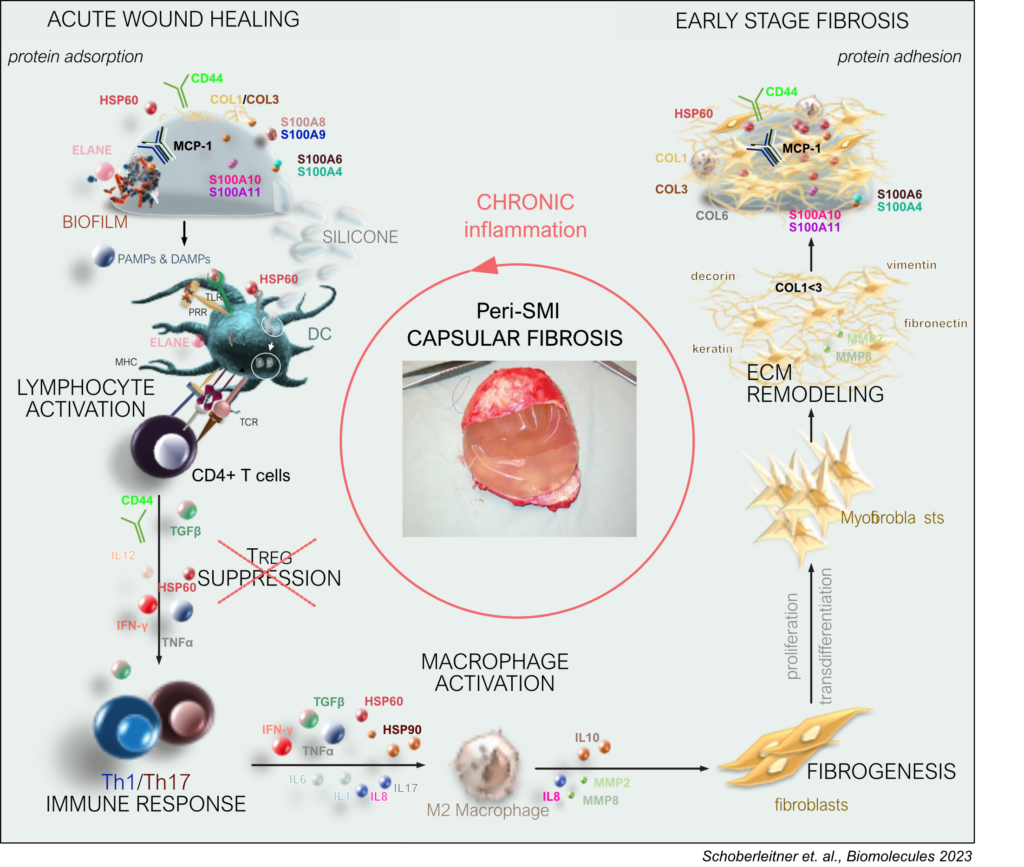
Research Group 3: The impact of fat tissue on wound healing (Ploner C. )
We are primarily interested in defining the mechanisms of chronic wound healing, in particular the role of adipose tissue and its potentially regenerative cells in this process. To date, we have identified CD34+ pre-adipocytes and adipocytes as an integral part of growing granulation tissue and identified macrophage polarisation as a regulator of adipocyte differentiation. Adipose-derived stem cells (ASCs) exposed to the secretome of pro- but not anti-inflammatory macrophages are limited in their adipogenic differentiation and induce a phenotype resembling features of the senescence-associated secretory phenotype, characterised by increased stress fibre formation, enhanced secretion of inflammatory cytokines and pro-angiogenic activity. Adipocytes in granulation tissue may function as energy source for activated immune cells, particularly macrophages. In further studies, we shall investigate molecular mechanisms regulating adipocyte-macrophage interaction in human wound tissue and determine the significance of this interaction for granulation tissue growth.
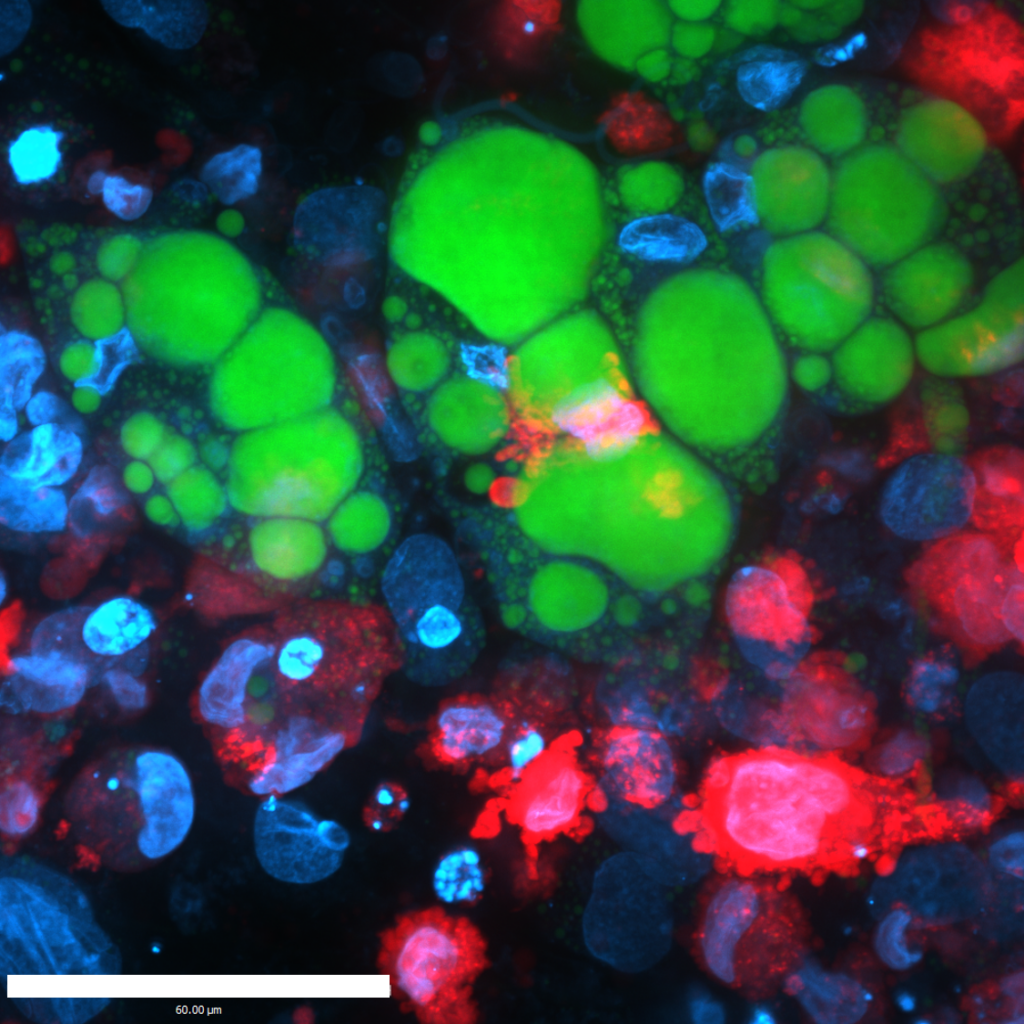
Pictures
Selected Publications
Ploner Christian, Rauchenwald Tina, Connolly Catherine, Joehrer Karin, Rainer Johannes, Seifarth Christof, Hermann Martin, Nagl Markus, Lobenwein Susanne, Wilflingseder Doris, Cappellano Giuseppe, Morandi Evi M, Pierer Gerhard: Oxidant therapy improves adipogenic differentiation of adipose-derived stem cells in human wound healing.
Stem Cell Res Ther. 2021 May 10;12(1):280.
PMID: 33971957 doi: 10.1186/s13287-021-02336-3
Nothdurfter Daniel, Ploner Christian, Coraça-Huber Debora C, Wilflingseder Doris, Müller Thomas, Hermann Martin, Hagenbuchner Judith, Ausserlechner Michael J: 3D bioprinted, vascularized neuroblastoma tumor environment in fluidic chip devices for precision medicine drug testing.
Biofabrication. 2022 Apr 12;14(3).
PMID: 35333193 doi: 10.1088/1758-5090/ac5fb7.
Del Frari Barbara, Sigl Stephan, Schwabegger Anton H, Blank Cornelia, Morawetz David, Gassner Eva, Schobersberger Wolfgang: Impact of surgical treatment of pectus carinatum on cardiopulmonary function: a prospective study.
Eur J Cardiothorac Surg. 2021 Jan 29;59(2):382-388.
PMID: 33212487 doi: 10.1093/ejcts/ezaa335.
Schoberleitner Ines, Faserl Klaus, Sarg Bettina, Egle Daniel, Brunner Christine, Wolfram Dolores: Quantitative Proteomic Characterization of Foreign Body Response towards Silicone Breast Implants Identifies Chronological Disease-Relevant Biomarker Dynamics.
Biomolecules. 2023 Feb 6;13(2):305.
PMID: 36830674 Free PMC article. doi: 10.3390/biom13020305.
Schoberleitner Ines, Augustin Angela, Egle Daniel, Brunner Christine, Amort Birgit, Zelger Bettina, Brunner Andrea, Wolfram Dolores: Is It All about Surface Topography? An Intra-Individual Clinical Outcome Analysis of Two Different Implant Surfaces in Breast Reconstruction.
J Clin Med. 2023 Feb 7;12(4):1315.
PMID: 36835850 Free PMC article. doi: 10.3390/jcm12041315.
Selection of Funding
Research Grant, Establishment Labs;
POSIS-trial, POLYTECH Health & Aesthetics GmbH
Collaborations
David Bernhard, Johannes Kepler Universität Linz, Linz, AUT
Barbara Messner, Medical University Vienna, Vienna, AUT
Gerald Brandacher, Johns Hopkins University, Baltimore, USA
Pidder Jansen-Dürr, University of Innsbruck, Innsbruck, AUT
Prof. Grabher, University of Innsbruck, Innsbruck, AUT
